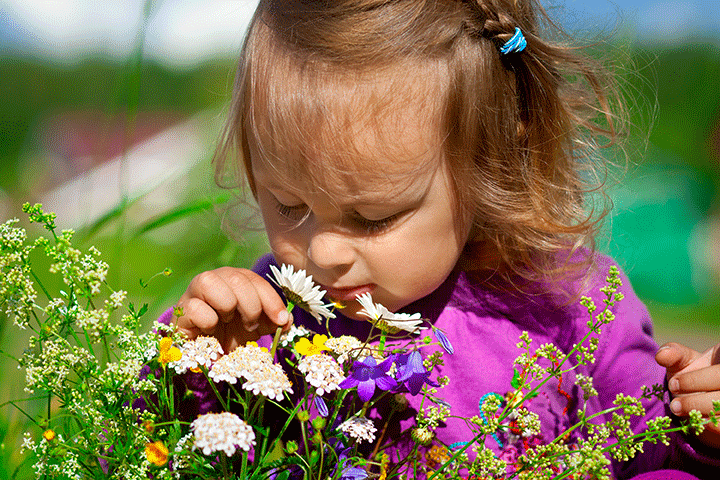It’s February, the month when we celebrate love, and if you want to establish a more loving relationship with your landscape and garden there is no time like the present to find a botanical soulmate—or mates.
While fall is prime planting season for trees, shrubs and many other perennials, most can still be planted successfully from now through early spring. But, as with all good long-term relationships, compatibility is key to a successful future so take time this month to explore your options before you commit.
Personally, I’m drawn to plants that are both good looking and low-maintenance. Luckily, I can find just that combination of virtues in plants that have roots right here in Alabama and the Southeast: native plants.
Native plants are already adapted to our environment so they are capable of flourishing without much pampering. They’re also supportive and nurturing, providing food and shelter for birds, insects and wildlife in our ecosystems. And there are so many to choose among—trees, shrubs, ferns, vines, herbaceous perennials, grasses and bulbs—so there is a native plant to match any spot in the landscape.
Looking for something tall and handsome—a tree for instance? I am madly in love with silverbells and native dogwoods and magnolias, all of which are good-looking and give me flowers. But there are also plenty of other appealing options—both blooming and non-blooming, deciduous and evergreen—to consider, such as hickories, oaks, maples, cedars, plums and pines, to name a few.
Drawn to smaller plants that are big on looks? There are lots of potential matches on the native shrub list. If you love those flowers, try native azaleas and hydrangeas as well as buttonbushes, sweetshrubs, buckeyes and viburnums. Want a fruitful relationship? Native holly, beautyberry and winterberry shrubs produce gorgeous berries that are lovely to behold and loved by birds and other critters…or plant native blueberries so you and the wildlife can eat.
If you want plants that will stick around for a long time but still add lots of color to your life, explore the many choices of flowering native herbaceous perennials such as aster, hibiscus, phlox, coneflower, coreopsis, yarrow and many, many others.
Want something that gives you cover but won’t take over your life or landscape? Try native honeysuckle or wisteria, passion vine, trumpet vine and jasmine. Prefer something dignified but interesting? Native grasses, ranging from the whimsical, wispy color of purple muhly grass to the simple beauty of native sea oats or rushes, could be just the match. Have a yen for a shady character? Get yourself some Christmas, Southern wood, shield and lady ferns.
As you can see, the possibilities for new loves in your garden are extensive. Thankfully you don’t have to choose just one, but you may want to know more about them all before you commit. To my knowledge there is no online matchmaking service available to link gardeners with plants (though maybe that’s a great idea for some enterprising, tech-savvy entrepreneur). However, you can do your own research (online or at your local library or garden center) to find out more about each plant’s personality and traits. Three online options are the Plant Native website (www.plantnative.org/rpl-algams.htm), the Alabama Plant Atlas site (floraofalabama.org) and in the Alabama Cooperative Extension System’s publication Herbaceous Perennials for Alabama (www.aces.edu/pubs/docs/A/ANR-0566/ANR-0566.pdf). Another source of information on plants (both native and nonnative) that will stick with you for better or worse is Felder Rushing’s book Tough Plants for Southern Gardens.
As you’re looking for new loves, though, don’t forget your old flames. Take care of the plants that are already in your life and landscape and start planting those good-provider plants for the spring and summer. Now is the time to plant cabbage, broccoli, cauliflower, spinach, lettuce, beets, carrots, radishes, mustard, asparagus, English peas, Irish potatoes, onion sets and strawberries!
February Tips:
Divide and move perennials, unless they are beginning to show new growth.
Clean up limbs and other yard debris that may have fallen in the winter weather.
Order seeds for the spring and summer garden.
Plant roses and hardy perennials.
Transplant deciduous shrubs and trees unless the buds have begun to swell.
Start warm-season vegetables, such as tomatoes, peppers and summer bedding plants, in cold frames or indoor settings now.
Prune summer flowering shrubs now. Don’t prune the spring bloomers until after they flower!
Check seeds you have saved from last year to make sure they are still viable (seed coat in good condition and not rotted).
Clean out moldy or sprouting seeds each time you refill bird feeders.
Give your sweetheart live plants, seeds or gardening tools for Valentine’s Day.
Attend gardening workshops and classes or get involved with your local gardening groups.
Shop for off-season garden supplies that may be on sale this time of year.
Repair and spruce up window boxes, lawn furniture, bird houses and feeders, garden tools and other outdoor equipment and items.






